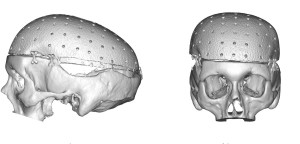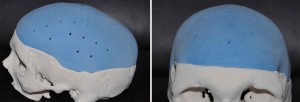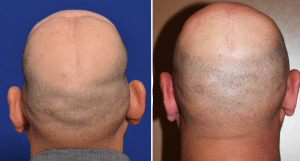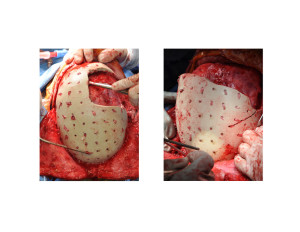Background: There are many procedures that can be done to rebuild the skull including bone replacement and external bone reshaping. (cranioplasty) With today’s computer technology large segments of the skull can be replaced by a variety of materials including HTR, PEEK and PEKK materials. While there are surgeon advocates for all of these materials, I have used all of them and they all offer excellent clinical outcomes. Their handing properties do differ and that must be considered in each patient for their particular skull reconstruction needs.
A computer-generated skull implant is intended for full-thickness bone defects. Whether it be a small or very large full-thickness skull defect, there is no better alternative for skull replacement in adults than the use of a computer-designed implant. The larger the skull defect the more relevant the use of a premade implant becomes.
There are very few cases of the need for a prothetic total skull implant. This would necessitate the loss or removal of the entire skull. Such is the following case and it illustrates that, while the entire skull can be replaced, that does not end the need for further reconstruction efforts. The perimeter of the skull has various tissue attachments which likewise need to be rebuild to complete a total skull reconstruction result.


While his revised total skull implant surgery was successful with a much improved head shape, he required three subsequent surgeries to create a more appearance. These procedures included fat injection temporal grafting, further only cranioplasties using PMMA material on top of his skull implant, revision of his T-shaped scars and ear setback surgery. (otoplasty) In the end her was able to achieve a much more natural looking head shape.

Highlights:
1) Total skull reshaping or reconstruction is a rare procedure that requires several stages to optimize the head shape.
2) The entire skull above the level of the ears can be safely (and only) replaced with a implant made from a 3D CT scan.
3) While the skull can be replaced, the surrounding soft tissue attachments must be considered in the overall skull reconstruction effort.
Dr. Barry Eppley
Indianapolis, Indiana





